Let’s be clear: so long as you are following the principles of Leave No Trace, there is no “right” or “wrong” way to hike. But that doesn’t mean you aren’t likely to get a bunch of weird looks if you carrying an umbrella while hiking or backpacking.
Hiking snobbery aside, there are some situations where it is completely idiotic to use an umbrella on the trail. And there are also some situations where it is absolutely genius (and those same hiking snobs will be envious :)). I’ll go over those situations here, as well as how to attach a hiking umbrella to your pack and which hiking umbrellas are worth buying.
Hiking Umbrellas Are Usually Terrible in the Rain
If you look at hiker boxes on popular trails, you’ll see that they are full of abandoned umbrellas. That’s because a lot of hikers optimistically pack umbrellas thinking they will be good for the rain only to realize that they have these problems when hiking:
- Poor Rain Protection: Unless the rain is falling straight down, an umbrella only protects your head. A rain jacket provides much better protection.
- Snag On Overgrowth: Umbrellas are very wide. If the trail is even slightly overgrown, the umbrella will annoyingly snag every two minutes.
- Wind: When hiking anywhere above treeline or without tree cover, the hard wind will destroy your umbrella or blow on it so hard that it becomes impossible to carry.
- Need Two Hands: On difficult segments or trails or steep inclines, you’ll want to have both hands free for safety in case you fall.
When Using a Hiking Umbrella Actually Makes Sense in the Rain
If the trail is wide and clear and the conditions won’t be too windy, a hiking umbrella can be awesome for these reasons.
- Breathability: In balmy weather, you end up wet from sweat when wearing a rain jacket shell. And, as old school hikers will tell you, an umbrella is a lot more breathable (and cheaper!) than a good shell.
- You Wear Glasses: As someone who wears glasses, I can attest to how much it sucks to hike in the rain. Even with a brimmed hat or your jacket visor pulled all the way down, the glasses still end up wet. Since all my hiking clothing is synthetic or wool fibers, I have to carry a separate microfiber towel just for drying my glasses.
- Hats Suck: Not only do hats trap heat on your head, but they limit visibility. (My sister once knocked herself out while hiking and reading a map because she walked into a tree she couldn’t see because of the hat!).
- Hoods Also Suck: I hate jacket hoods even more than hats. Even when they are pulled all the way down, they don’t block rain from your eyes well. Hoods also trap heat and you have to listen to the jacket rustling sound around your ears. Forget about talking to your hiking partner with a hood on!
- You Get a Dry Place: It’s more enjoyable to do things like eat snacks under an umbrella. And it’s definitely easier to do tasks like checking your paper or check your (paper!) map.
- Privacy: An umbrella can also serve as a privacy screen for when you need to go to the bathroom along popular trails where there are zero trees or bushes to hide behind!
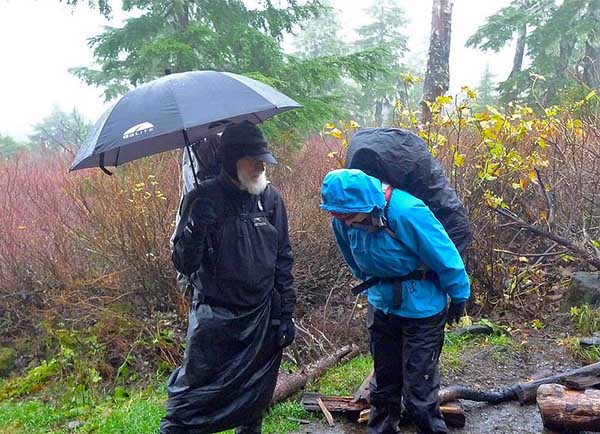
It might look silly but an umbrella + rain skirt provides good protection with amazing breathability.
Hiking Umbrellas for Sun Protection
Hiking umbrellas are most useful when hiking in very hot sunny conditions (I guess we should be calling them parasols and not umbrellas…) – especially if you will hike on roads.
For example, the Ice Age National Scenic Trail in Wisconsin has a lot of sections that are on pavement. It gets insanely hot and there’s no shade. Using an umbrella on these stretches will make it more bearable.
I’ve also heard from a lot of bald hikers about how much they appreciate an umbrella on sunny days. It turns out that wearing a hat in the sun traps an insane amount of heat and makes you feel uncomfortable.
An umbrella also beats slathering yourself with tons of sunblock. Did you know you are supposed to reapply sunblock every TWO HOURS when sweating? Theoretically, the extra weight of the umbrella might balance out since you won’t have to pack as much sunblock.
Fun fact: While white might be best at reflecting sun, black is best at protecting against UV rays. That’s why hiking sun umbrellas are silver on the outside and black on the underside.
Attaching an Umbrella to Your Pack
Attaching the umbrella to your pack means you can use it hands-free. This is crucial if you want to do things like check your map or sit for a break without having to put the umbrella down each time!
There are a several ways to do this.
1. Put the Handle Under Your Sternum Strap (Not Recommended)
With this method, the lower part of the handle is underneath your sternum strap and the upper part rests on your shoulders. No extra straps or cords needed. However, the umbrella can dig into your shoulders and will slide around a lot. I don’t recommend it.
2. Cords + Cordlocks
- Get two pieces of elastic cord and two cordlocks
- Put cords around your backpack strap and then slide the cordlocks over them to create loops.
- Position the cords so one is up near your shoulder and the other about 6 inches down from it.
- Put your umbrella handle through the cord.
- Tighten the cordlocks to secure the umbrella in place.
A lot of brands sell “hands-free umbrella kits” specifically for this purpose. But you could just as easily make your own. The one shown below is by Six Moon Designs.
3. Umbrella Holster Clips
Instead of using two cords, this method uses one cord plus a special clip. The clip is a bit less wobbly than a cord. The image below shows the system by Z Packs.
Also, check out this system. He sewed two umbrella clips to different places on his pack strap. The end of the umbrella goes into his shoulder strap pocket. Then he clips the handle into one of the clips. Having two clips means he can adjust the height and angle of his umbrella depending on the conditions.
4. Guylines for Wind
If you want to really secure your umbrella so it stays in place even in the wind, then check out this system by Liveslight. He’s got guylines attaching the umbrella to his pack.
Hiking Umbrella vs. Regular Umbrella?
What makes a “hiking” umbrella different than regular umbrellas are features like:
- Reflective with UPF protection
- Carbon fiber frame to make it lightweight but strong
- Shorter handles to make them more lightweight
- Foam handle for grip
- Shaft not collapsible so you can use the umbrella for pitching a tarp or shelter
Not surprisingly, any umbrella marketing itself as a “hiking umbrella” is going to cost a LOT more than a normal umbrella. If you aren’t even sure you’ll like hiking with an umbrella, just use a cheap regular umbrella at first. Test it out on a few day hikes before you drop $50 for a hiking umbrella for your big adventure.
Note:Hiking umbrellas are usually terrible for everyday use. Because they have such short handles, lightweight hiking umbrellas can actually be annoying to hold in your hand. They are really designed to be clipped to your shoulder strap.
Best Hiking Umbrellas
The brands below make good hiking umbrellas.
Six Moon Designs Umbrellas
SMD makes several different ultralight umbrellas that are actually constructed very well. The Silver Shadow line is made for sun and light rain whereas the Rainwalker does not have UV protection.
- Silver Shadow: 6.8oz, 37” diameter, 23.5” shaft, carbon fiber frame, foam handle, UPF 50+
- Silver Shadow Mini Collapsible: 7.1oz, 38” diameter, 20” shaft, carbon fiber and aluminum frame with plastic or foam handle, UPF 50+
- Silver Shadow Base: 8.9oz, 37” diameter, 23.5” shaft, fiberglass frame, foam handle, UPF 50+
- Rain Walker SUL: 5.5oz, 37” diameter, 23.5” shaft, carbon fiber frame with foam handle
Also available at Garage Grown Gear
Gossamer Gear Umbrellas
Gossamer Gear has a couple of umbrellas. The Lightrek is affordable (for ultralight gear at least!) but isn’t as strong as their Gold Dome which is made from carbon fiber. Like with SMD umbrellas, the shaft is not collapsible.
- Lightrek:6.3oz, 37.5” diameter, 25” shaft, aluminum frame, foam handle, UPF 50+
- Gold Dome: 6.6oz (with strap), 37.5” diameter, 25” shaft, carbon fiber, foam handle, UPF 50+
Available at Garage Grown Gear
G4Free
G4Free makes a few lightweight umbrellas which are marketed for trekking, travel or golf. The Liteflex Mini is made from fiberglass, which is stronger than aluminum but heavier. Fiberglass isn’t as strong as carbon fiber but it’s a lot cheaper. It comes with loops for attaching to your pack.
The G4Free umbrella could also work for hiking but it has a weird plastic disc handle. You’ll need to put a piece of foam around the shaft to keep it from wobbling when attached to your pack. It’s cheap but doesn’t come with loops for attaching to your pack.
- Liteflex Mini: 9.5oz, 38” diameter, 23” shaft, fiberglass frame, UPF 50+
- G4Free Travel: 4.5oz, 37.5” diameter, 20” shaft, carbon fiber ribs and aluminum shaft, plastic disc handle, UPF 50+
Euroschirm Swing Liteflex
Formerly the GoLite Chrome Dome, this umbrella is a bit heavier at 9oz but its aluminum and fiberglass frame are quite sturdy. Get it here. Available here.
Image credits:
“Dwreck hiking with Mori’s sun umbrella” (CC BY-NC 2.0) by Rebecca Sudduth,
“Railroad grade” (CC BY 2.0) by nordique,
“proper walking” (CC BY-SA 2.0) by Umnak,
“2016–Phil and Yuna hike on Squak Mounta” (CC BY 2.0) by LittleRoamingChief,
“Me and the Umbrella” (CC BY 2.0) by daveynin,
“Un domingo de lluvia” (CC BY-NC-SA 2.0) by Paulo Etxeberria
Resources:
https://pubmed.ncbi.nlm.nih.gov/28850147/,
https://pubmed.ncbi.nlm.nih.gov/28114650/,
https://jamanetwork.com/journals/jamadermatology/fullarticle/1670412


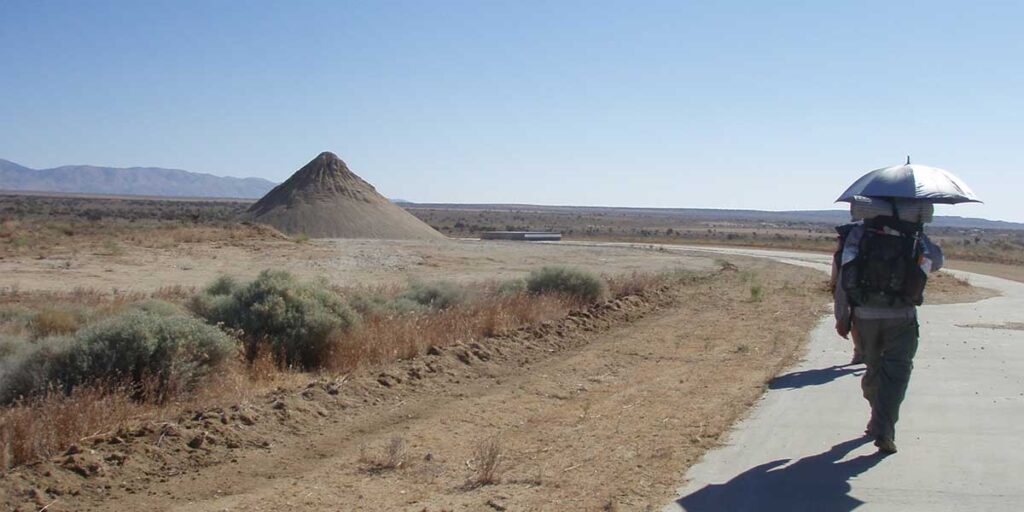
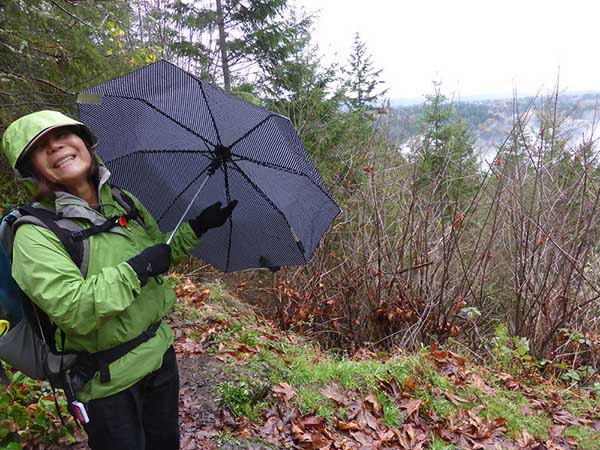
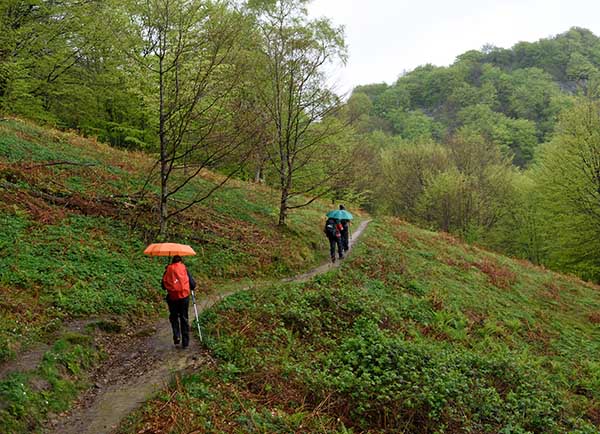
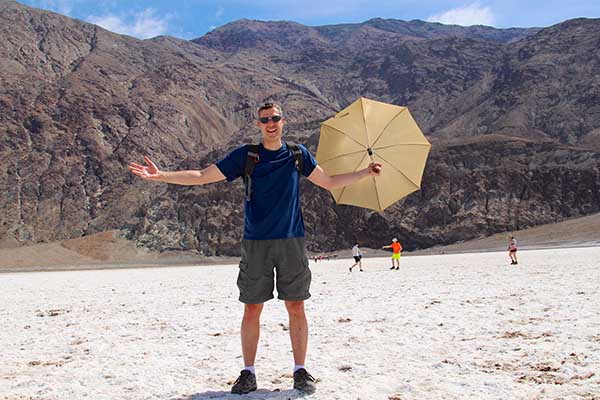
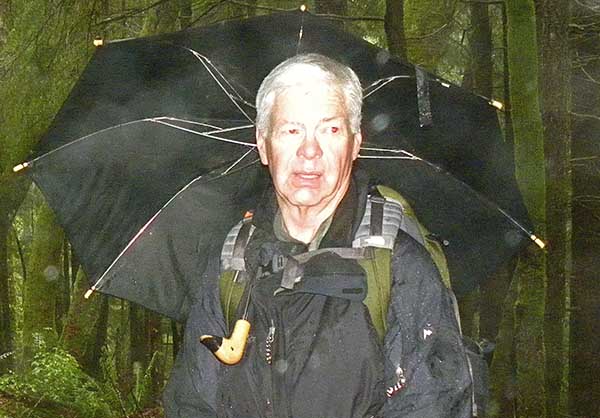
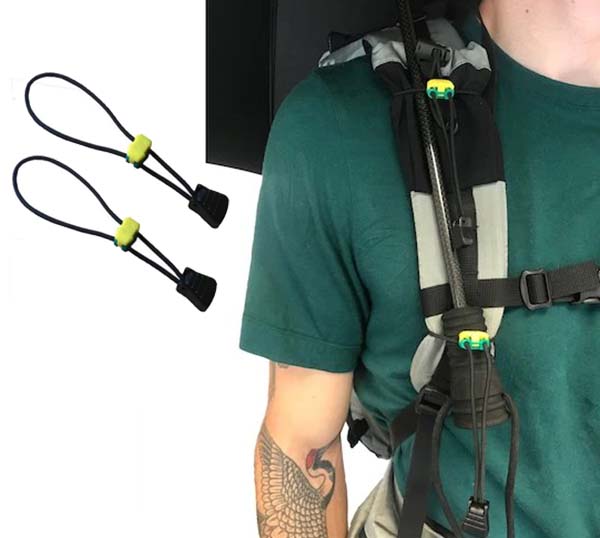
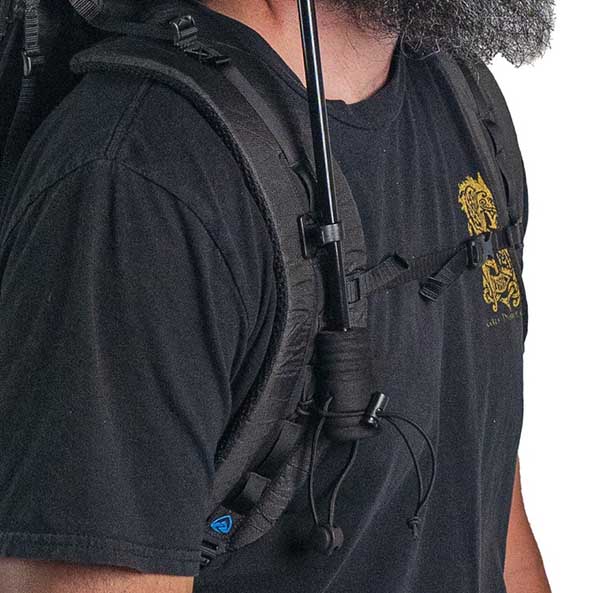
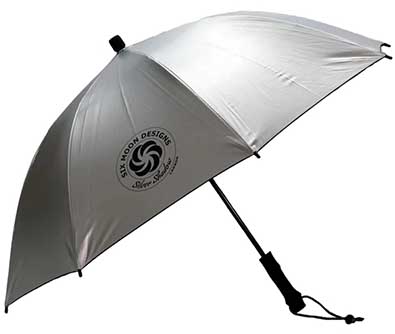


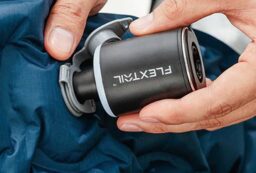







Post your comments